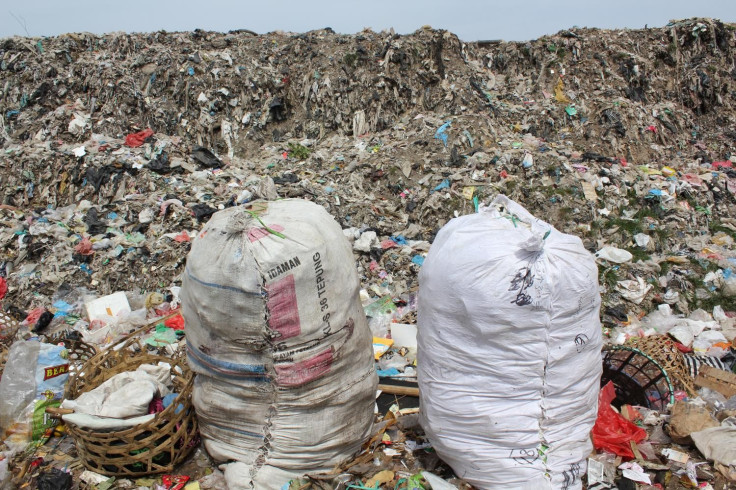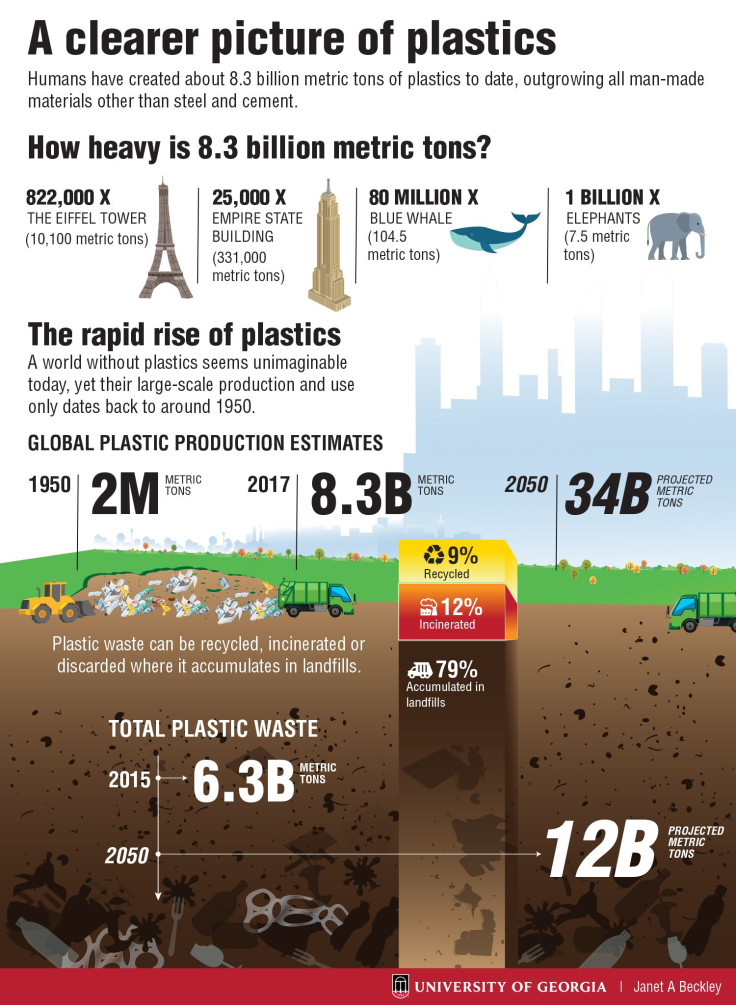Humans Have Produced Enough Plastic To Build 25,000 Empire State Buildings

Humans have created enough plastic since the 1950s to give an entire ton of the material to each person on the planet and still have plenty leftover for other projects.
According to new research, there has been enough plastic produced in the last several decades to equal the weight of more than 25,000 Empire State Buildings, or to balance a scale that has about 1.1 billion elephants standing on one side. Most of that material has already become waste but has not been recycled, and that could spell trouble for our environment and our planet as a whole.
Read: Can Caterpillars Solve Plastic Pollution?
A study in the journal Science Advances analyzed the history of plastic production and determined that 8.3 billion metric tons of plastic was created between when mass production began in the early 1950s and 2015. That tonnage figure translates to about 9.15 billion U.S. tons, also known as short tons, in which each ton is 2,000 pounds.
Almost three-quarters of that plastic has already become waste, as opposed to still being in use, with the overwhelming majority of it building up in landfills or littering nature, rather than being recycled or incinerated.
The only materials that humans have produced more of are steel and cement. And plastic production is still increasing.
“Although the first synthetic plastics … appeared in the early 20th century, widespread use of plastics outside of the military did not occur until after World War II,” the study says. “A world without plastics, or synthetic organic polymers, seems unimaginable today.”
Much of the plastic created goes toward packaging, like plastic bags, bottles and other containers. That contributes to the prevalence of single-use products that are simply thrown out rather than recycled, and none of the commonly used materials are biodegradable: “As a result, they accumulate, rather than decompose, in landfills or the natural environment.”
The issue of plastic buildup is perhaps best exemplified in the beach at Henderson Island, an uninhabited and remote island in the South Pacific Ocean. Scientists recently reported that the beach there, despite being so far from any civilization, is absolutely choked with plastic litter, with hundreds of pieces of plastic debris within each square meter of sand. And that was just close to the surface — thousands more pieces were lurking underneath. To make matters worse, more debris washes up there every day. Some crabs were found making homes out of pieces of plastic.
“The same properties that make plastics so versatile in innumerable applications — durability and resistance to degradation — make these materials difficult or impossible for nature to assimilate,” the new study notes. “Thus, without a well-designed and tailor-made management strategy for end-of-life plastics, humans are conducting a singular uncontrolled experiment on a global scale, in which billions of metric tons of material will accumulate across all major terrestrial and aquatic ecosystems on the planet.”
Researchers estimate that the amount of plastic waste in the world’s landfills and scattered through nature could reach 13.2 billion U.S. tons by 2050 if production and recycling rates continue at their current rates.
Read: Could Scientists Use Sugar in Your DNA to Create Eco-Friendly Plastics?
Plastic started being produced at 2.2 million tons in 1950 and increased to about 440 million tons in 2015.
“Most plastics don’t biodegrade in any meaningful sense, so the plastic waste humans have generated could be with us for hundreds or even thousands of years,” study co-author Jenna Jambeck said in a statement from the University of Georgia. “Our estimates underscore the need to think critically about the materials we use and our waste management practices.”
That university also worked with the University of California, Santa Barbara, and the Massachusetts-based Sea Education Association on the project.
The researchers are calling for a close look at how people use plastics, and hope their analysis will help with that.
“There are areas where plastics are indispensable, especially in products designed for durability,” coauthor Kara Lavender Law, from the SEA, said in the statement. “But I think we need to take a careful look at our expansive use of plastics and ask when the use of these materials does or does not make sense.”

© Copyright IBTimes 2024. All rights reserved.





















